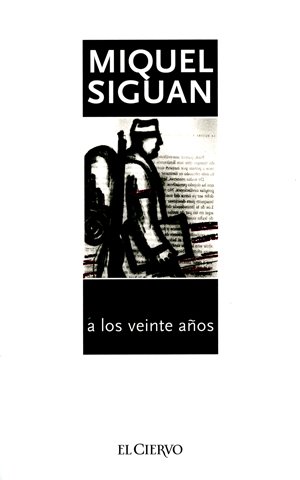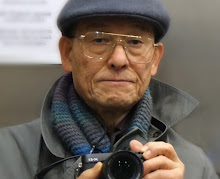Dec 20, 2020
スペインロマネスクの旅「番外編」
「ザ・クロイスターズ美術館」
’’The Met Cloisters Museum’’(New York)
(For
the summary in English please see the end of this page)
Photo(1)ことしは3月ころからCovia-19のため世界各地でロックダウンが始まり、私が住んでいるトロント市でも、旅行はおろか親しい友人に会うこともままならぬ状態が長く続いている。そんなことで、まだしばらくはスペインのロマネスク教会を訪ね歩く、などというのは「夢のまた夢」というのが現実。
というわけで、今回は「スペイン・ロマネスクの旅 - 番外編」ということで、昨年9月ニューヨークの「クロイスターズ美術館」(The Met Cloisters Museum)でお目にかかった、ロマネスク建築を話題にとりあげることにした。
同館は メトロポリタン美術館の別館で、一枚の入場券で両館を観ることができる仕組みになっている。北米では珍しくヨーロッパ中世の宗教美術に特化したこじんまりとした美術館で、ロックフェラーの資金援助を得て、新設の美術館がマンハッタンの北部ハドソン河を見下ろすFort Tyron Parkの丘に開館したのは1938年、第二次世界大戦がはじまる一年前、スペインでは各地で激しい内戦が繰り広げられているころだった。
私が同美術館を訪ねたのは9月の暑い日だったが、Google Mapでは地下鉄のDyckman駅から500米、と出ていたのでてくてく歩きだしたところ、けっこう上り坂もあり、また途中見晴らしの良いベンチでひと休みなどしたため、結局30分くらいかかってしまった。地下鉄駅前で客待ちしていたタクシーに乗ればよかったのかな、とあとで思ったしだい。
クロイスターズの売り物は、南フランスのロマネスク大修道院Saint-Michel-de-Cuxa(サン・ミシェル・ド・クシャ)の回廊(12世紀作)を復元したものだが、私がもうひとつ興味をそそられたのは、スペインのセゴビアから12世紀のロマネスク教会をそっくり移送したSan Martín de
Fuentidueña(サン・マルティン・デ・フエンティドゥエニャ)教会を見ることだった。1950年代の半ばフランコ独裁政権と話をつけ、教会の3300個の石をひとつひとつ取りはずし、300トン近い石材をビルバオ港から船でNYまで運び組み立てたもので、企画から作業完了まで足かけ7年を要したとのこと。スペイン側の作業責任者は心労で胃潰瘍を起こしてしまったと聞いたが、いまからみればよくもそんなことが実現したな、とつくづく思う。
Abbey
of Saint-Michel-de-Cuxa(サン・ミシェル・ド・クシャ修道院)
クシャ大修道院は、スペイン国境に近いルション(Roussillon)地方のロマネスク教会のひとつで、創建9世紀という古い歴史をもつ大僧院。地下にはプレロマネスク様式の礼拝堂が残っている。
ルション地方は17世紀の半ばまでスペイン領であったという歴史と、人口の1/3くらいがカタルーニャ語を話すということで、カタルーニャの人たちは今でもこの一帯を「北カタルーニャ」と呼ぶ。
フランス革命の結果、教会の取り壊しや売却が起きたとき、この由緒あるクシャ大修道員も荒廃し宗教美術品が散逸してしまった。63個あった柱頭彫刻のうち、その半分がアメリカ人の彫刻家で中世美術のコレクターでもあったバーナード(George Grey
Barnard 1863-1938)の手に渡り、そのあとクロイスターズ美術館の所蔵品となったもの。
クロイスターズでは、半分の柱頭彫刻を使って四辺形の回廊を復元しているため、私が7年前にルションのクシャ修道院を訪ねたときに見た回廊に比べると、その規模はちょうど半分になっている。回廊の石材は大理石であり、潤沢な資金が投入されたことをうかがわせる。
「フランス・ロマネスクへの旅」(中公新書)の著者池田健二氏は、この回廊について「故郷の大地から切り離された回廊には一抹の寂しさが漂う」と述べておられる。「宗教美術は祈りの場と切り離すべきではない」という議論は説得力を持つが、ていねいに復元されたロマネスク建築を手軽に北米で見られるのは、何といっても有難い。
Photo(2)
Photo(3)
Photo(4)
柱頭彫刻(Capitals)
材質は大理石だが、スペインでよく見かける粗削りの力強い彫りが特徴。絵柄は動物や人物が主体で、植物文様は少ない。
「いったいこの絵柄は何を意味しているのか」などと深刻に考え込むより、しばらくじっと眺めているとつい笑いがこみあげてくるような、そんな気分にさせられるのがロマネスク彫刻の良さではないかと思う。
Church of San Martin de Fuentidueña(サン・マルティン・デ・フエンティドゥエニャ教会)
フエンティドゥエニャは、セゴビア県の小さな村落(人口150人)であるが、12世紀半ばころにここに教会が建てられたものらしい。1950年代の半ばに「クロイスターズ美術館所蔵の6枚のロマネスク壁画絵と引き換え」との条件で、フエンティドゥエニャ教会を「永久貸与」することにスペイン政府」が同意したわけだが、いまから60年前のスペインではロマネスク美術への社会の関心も薄く、「何万とあるロマネスク教会のひとつぐらい」ということで、交換が実現したのだろう。
ただし石材は風化に弱い材質らしく、スペインに残された教会を囲む塀の部分は、今ではボロボロになり廃墟となっているようなので、文化財保存の観点からは、ニューヨークに移して正解だったということになる。ロマネスク壁画(Spanish Romanesque wall paintings)
クロイスターズ美術館には、まだ3枚のスペインロマネスク壁画が残っていて、フエンティドゥエニャ教会の手前の廊下の壁に展示されている。
写真(14)のラクダ像は、サン・バウレリオ・デ・ベルランガ礼拝堂(San Baulelio de Berlanga)の内部を飾っていたロマネスク壁画の一枚。
ベルランガ礼拝堂は、ムスリム文化の影響を残すモサラベ様式と呼ばれる、数少ないプレ・ロマネスクの小さな聖堂であるが、内部の装飾は後代のロマネスク様式の壁画で飾られていた。19世紀後半から20世紀初頭にかけて、スペインの教会のほとんどが荒廃した時期に、ベルランガ礼拝堂の壁画も散逸し、いまは各地の美術館の所蔵品となっている。
写真(15),(16)はブルゴス県のサン・ペドロ・デ・アルランサ修道院(San Pedro de Arlanza)の壁画。アルランサ修道院は、10世紀創建の由緒ある修道院だったが、今は廃墟になっている。
I visited the Met Cloisters Museum in September, 2019. The Cloisters is an annex of the Metropolitan Museum of Art and we can visit both museums with a single admission ticket. It’s a relatively small museum specialized in the medieval European religious art, which is rare in North America.
With Rockefeller’s funding the museum was opened
in 1938 at Fort Tyron Park overlooking the Hudson River in north Manhattan. It
was one year before the beginning of World War II, and in Spain when fierce battles
of civil war were being fought.
Saint-Michel-de-Cuxa Abbey
The Cloisters Museum is known for the 12th century Romanesque cloister of Saint-Michel-de-Cuxa Abbey in southern France. The cloister was reconstructed using half of the capitals belonging to the Abbey which were acquired by an American sculptor and art collector George Barnard in early 20th century.
Romanesque church San Martín de Fuentidueña(Segovia, Spain)
Another Romanesque architecture I was very interested to see was San Martín de Fuentidueña church, the 12th century Romanesque church from Segovia(Spain). In the mid 1950s the Met made a deal with the Franco dictatorship to get the entire church as ‘’permanent lease’’ in exchange for six Spanish Romanesque fresco wall paintings which had been in their possession.
The church's 3,300 stones were removed one
by one, and nearly 300 tons of stone were transported from Bilbao port to NY to
be assembled at the Cloisters. It took almost seven years from planning to
completion. I heard that the person in charge at the Spanish side had a stomach
ulcer due to stress.
I doubt it would be possible to achieve such a deal now, but 60 years ago in Spain there was little social interest in Romanesque art, and Spanish people might have thought "it’s one of the tens of thousands of old churches" in Spain.
The irony is that the type of stones used for the church apparently was very vulnerable to wear in Spanish environment and the wall surrounding the church which was left in Spain has now become a ruin. Consequently for the conservation of cultural properties we can say that the deal might have been an adequate one.
The Romanesque Murals
The Cloisters Museum still has three Spanish Romanesque murals on display.
The camel of photo (14) is one of the Romanesque murals that adorned the interior of the Pre-Romanesque Chapel of San Baulelio de Berlanga(Soria, Spain). The Berlanga Chapel is one of the few remaining Mozarabic style architecture in Spain. It retains the influence of Muslim culture with the interior being decorated by Romanesque murals. During the period of devastation for most of the Spanish churches in late 19th and early 20th centuries, the murals of the Berlanga Chapel were dissipated and are now in the collection of museums around the world.
Photos (15) and (16) are mural paintings of the Romanesque Monastery of San Pedro de Arlanza(Burgos, Spain). The Arlanza Monastery was a historic monastery founded in the 10th century, but is now in ruins.


















